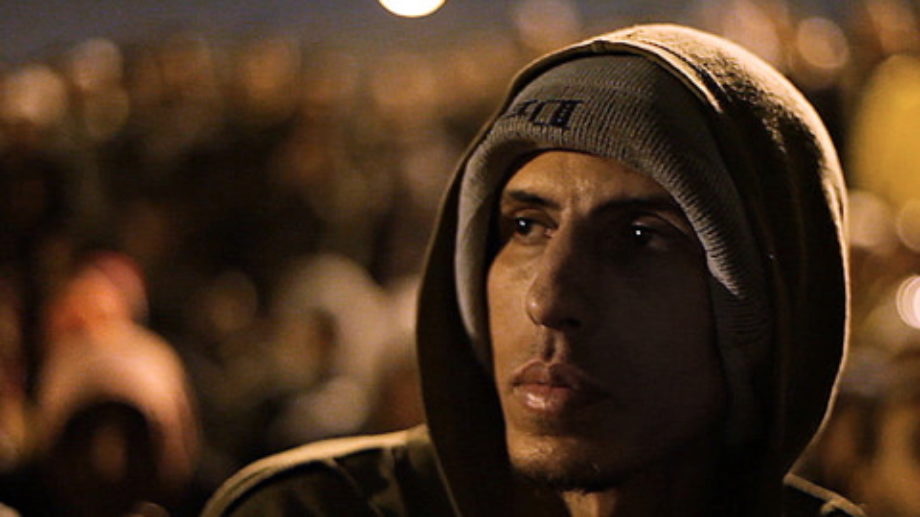
Tahrir: Liberation Square begins and ends inside the revolution’s camp, pressed up close to the faces that occupied one of Cairo’s busiest marketplaces on January 25, 2011, and helped force Hosni Mubarak from the presidency he had held for 30 years. After three days of watching al Jazeera’s online coverage, Stefano Savona flew to Egypt as he had done each of the last 20 years, camera in hand. We see a few faces more frequently than others—Ahmed, Noha, and Elsayed, all bright-eyed and determined—but Tahrir follows the narrative of the revolution rather than personal stories, each minute bringing forth a different voice.
Savona spends the first third of the film picking his way through the crowd, capturing what begins as a celebration. The faces that do appear are there only to lead a chant or deliver a speech, quickly dissolving back into the crowd. The filmmaker stays silent throughout, and the faces on which he lingers do more than fill that space. No experts are presented, no historical context given. The conversations shown concern over sustenance and exposure: how to feed people, how to heal people, how to keep the rest of the world interested. Tahrir is first a celebration of Egypt and then a reclamation of a stolen culture, what one protester calls “a war without weapons.”

Until night falls. The previously smiling faces now have blood pouring from their eyes and leaking from bandaged foreheads and cardboard helmets. The sidewalk is ammunition: concrete is ripped up and hurled at mirror image “pro-Mubarak” supporters, revealed as hired mercenaries paid to throw the rocks right back. Savona follows from a distance, his camera always on the move. The urban isolation of the camp reveals itself at night: grimy revolutionaries try to sleep bathed in streetlights, exhausted but determined to finish what many of them tell the camera is a critical moment in Egypt’s history.
A broad umbrella of a national identity had, until now, been discarded. But the fierce pride awakened by the revolution fills the screen in the form of massive Egyptian flags. Ahmed’s eyes are continually darting to and from the different groups, playing politician as much as revolutionary. Their success hinges on the group becoming the “one hand” that so often appears in Tahrir’s endless call-and-response chants, each leader erupting with devotion for the countrymen that repeat his words.
Egypt’s future is still in the balance—power was “handed over” to the army, and the upcoming elections pit one extremist against another. But the tremors of Tahrir Square are still shaking, a memory Savona’s film will keep in the forefront of many Egyptian minds. Liberation Square’s decision to let the people speak—and scream—for themselves leaves viewers with raw filmmaking devoid of media bias or Western melodrama. It is one of those rare documentaries that simply steps back and watches, and the result is hypnotic.



